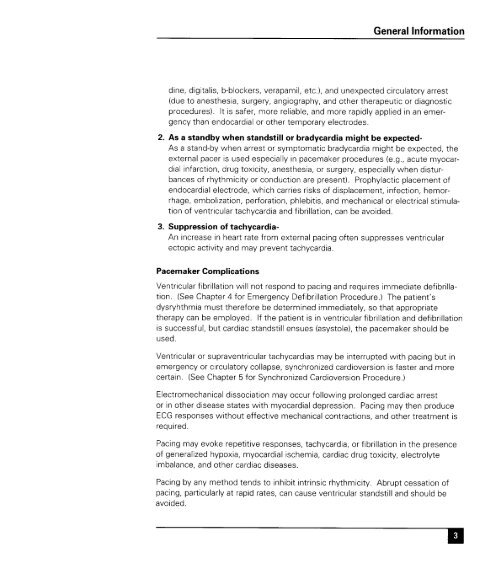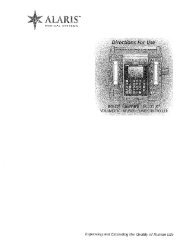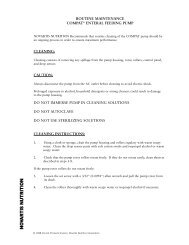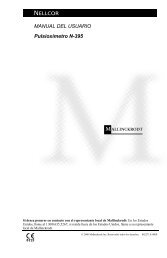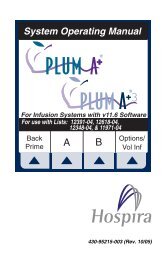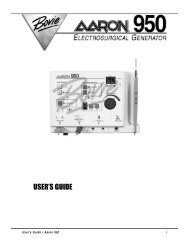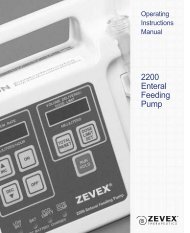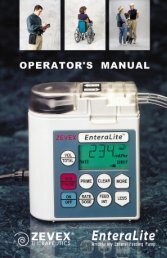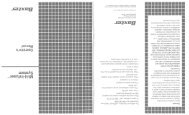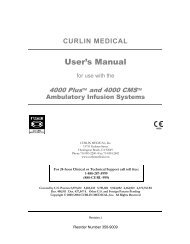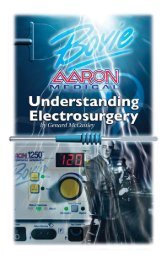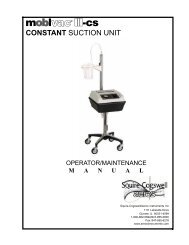Zoll 1400 Operators Manual
Zoll 1400 Operators Manual
Zoll 1400 Operators Manual
Create successful ePaper yourself
Turn your PDF publications into a flip-book with our unique Google optimized e-Paper software.
2. As a standby when standstill or bradycardia might be<br />
expected-<br />
As a stand-by when arrest or symptomatic bradycardia might be expected, the<br />
external pacer is used especially in pacemaker procedures (e.g., acute<br />
dial infarction, drug toxicity, anesthesia, or surgery, especially when disturbances<br />
of rhythmicity or conduction are present). Prophylactic placement of<br />
myocar-<br />
endocardial electrode, which carries risks of displacement, infection, hemorrhage,<br />
embolrzation, perforation, phlebitis, and mechanical or electrical stimulation<br />
of ventricular tachycardia and fibrillation, can be avoided.<br />
3.<br />
Suppression of tachycardia-<br />
An increase in heart rate from external pacing often suppresses ventricular<br />
ectopic activity and may prevent tachycardia.<br />
Pacemaker Complications<br />
General Information<br />
dine, digitalis, b-blockers, verapamil, etc.), and unexpected circulatory arrest<br />
(due to anesthesia, surgery, angiography, and other therapeutic or diagnostic<br />
procedures). It is safer, more reliable, and more rapidly applied in an emergency<br />
than endocardial or other temporary electrodes.<br />
Ventricular fibrillation will not respond to pacing and requires immediate defibrillation.<br />
(See Chapter 4 for Emergency Defibrillation Procedure.) The patient’s<br />
dysryhthmia must therefore be determined immediately, so that appropriate<br />
therapy can be employed. If the patient is in ventricular fibrillation and defibrillation<br />
is successful, but cardiac standstill ensues (asystole), the pacemaker should be<br />
used.<br />
Ventricular or supraventricular tachycardias may be interrupted with pacing but in<br />
emergency or crrculatory collapse, synchronized cardioversion is faster and more<br />
certain. (See Chapter 5 for Synchronized Cardioversion Procedure.)<br />
Electromechanical dissociation may occur following prolonged cardiac arrest<br />
or in other disease states with myocardial depression. Pacing may then produce<br />
ECG responses without effective mechanical contractions, and other treatment is<br />
required.<br />
Pacing may evoke repetitive responses, tachycardia, or fibrillation in the presence<br />
of generalized hypoxia, myocardial ischemia, cardiac drug toxicity, electrolyte<br />
imbalance, and other cardiac diseases.<br />
Pacing by any method tends to inhibit intrinsic rhythmicity. Abrupt cessation of<br />
pacing, particularly at rapid rates, can cause ventricular standstill and should be<br />
avoided.


